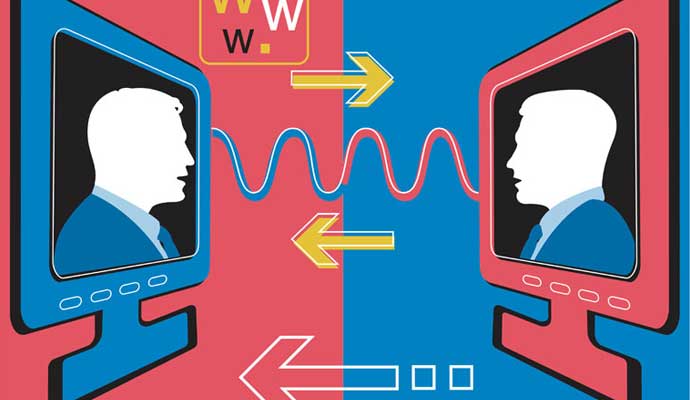A Better Customer Service Connection
Four steps for helping an organization design and deliver a successful customer experience program.
(originally published by Booz & Company)In many service industries, customer experience is emerging as a valuable way for companies to differentiate themselves from the competition and to increase market share. Most companies understand this, but many are unable to improve interactions with customers enough to make a difference. Why?
There are two types of disconnects that get in the way of delivering the useful, pleasurable, and repeatable experience that customers demand. The first is the “needs disconnect”: Organizations find it difficult to step into their customers’ shoes and understand their real needs, relying instead on tools that do not yield the insight required to service key customer segments effectively.
The second type is the “organizational disconnect”: Companies make it too difficult for customers to get the service they want without being shuffled among departments and receiving contradictory messages. Organizational silos, furthermore, often make well-meaning but fragmented decisions about customer service. For an organization to create a successful customer experience, it must understand its customers’ perspective and how well it is meeting customer needs across the entire organization; then it must address these needs — but only to the degree that doing so aligns with its strategic intent. In other words, a company’s customer experience design should leverage the organization’s existing strengths, support growth, manage costs, and boost revenue and profitability.
The needs disconnect became apparent in the results of two surveys conducted by our firm in 2006, one asking customers what they need and the other asking business leaders what they believe their customers need. More than 1,200 customers weighed in on the quality of service in four industries — retail banking, brokerage, health insurance, and airlines — as did executives from leading organizations across these sectors. When they were asked to rate the importance of eight customer service elements — speed, professionalism, responsiveness, timeliness, product and service expertise, accuracy, fees and charges, and personalization — the two groups diverged in every category. Personalized service, which companies said was the most important service element, was least important to customers. Customers named speed as the most important service element, whereas companies put it near the bottom. Executives assumed that customers wouldn’t pay for personalized service, but more than 25 percent of customers said they would pay for specific services they valued, as long as they couldn’t get them elsewhere free.
These disconnects are unlikely to be resolved through a onetime initiative. Rather, it will require an ongoing effort to understand the customer and apply that insight strategically. A four-step “outside-in, inside-out” technique is effective in helping an organization design and deliver a successful customer experience program.
1. Segment customer needs from the outside in. A holistic understanding of customers requires that companies recognize the various dimensions of customer need. They include the functional (what the customer wants the service offering to do), the behavioral (which delivery channel and what mix of offerings the customer prefers), and the demographic (how the customer’s needs vary by life stage, age, gender, and geography). It is vital that the organization distinguish between customers’ actual needs and their stated needs. In addition to tracking customer behavior, companies can identify actual needs by observing what customers select among different bundles of offerings and what they choose to keep and give up.
After determining customers’ actual needs, the company should figure out which of them it is already addressing and whether those efforts are effective. By knowing what it does well, a company can leverage its strengths and define what customers will associate with that company.
2. Design the customer experience from the inside out. A company should not attempt to address every customer need. Rather, it should focus on those that are of the greatest concern to the customer but also produce the greatest benefit for the company. Finding that connection starts with identifying the potentially high-value customer segments along with those that the company can afford to ignore. The company must then ensure that it maps the right needs and service levels to the different segments, prioritizing customer needs against its own operational strengths in a way that reduces complexity and lowers costs.
One credit card company, for example, found that its one-size-fits-all approach to service was not working and customer churn was climbing. It avoided the temptation to put in operational fixes for ongoing glitches in service delivery and instead designed a new customer experience program. The company took the inside-out approach by giving its clients the ability to select their preferences from a menu, including channel (does the customer want to communicate by phone or online?) and product (does the customer want a regular, gold, or platinum card?). Doing this allowed customers to fine-tune their own experience while allowing the organization to simplify and standardize delivery. The company also realized that high-value customer segments did not automatically demand high-end service. In one of the company’s two high-value segments, people wanted to deal with an agent; in the other, they preferred the online channel, which reduced servicing costs.
3. Measure the true customer experience. Measuring the impact of the customer experience on a company’s bottom line is both essential and difficult, and it takes careful consideration of both qualitative and quantitative feedback. Customer satisfaction scores, such as those from the American Customer Satisfaction Index or J.D. Power & Associates, do not automatically correlate statistically with key indicators such as revenues or profitability. Measuring customer loyalty yields a stronger tie to return on investment and other key indicators. Customer loyalty benchmarks include changes in customer retention, cross-sell, share of wallet, and conversion of referrals to new customers. In addition, service excellence requires ongoing tracking and management of customer touch points to ensure there is consistency enterprise-wide, for example, in a bank across branches, between call centers and branches, and even among staff at the same branch.
Companies should also seek a comprehensive view of the customer experience by gathering the right sets of qualitative and quantitative feedback across the organization. One retail mortgage organization wanted to know why a large number of referrals were not being converted to new customers. An analysis found that the company did not track the end-to-end referral process. By piecing together the data puzzle across sales, credit, operations, and IT, the company uncovered not only the source of the leak but also such lost opportunities as failures to follow up with customers who were approved but did not activate accounts.
4. Close the loop. To develop the ability to continuously read and address the changing needs of customers, organizations should establish communication and information loops across their organizational silos. They must also build in the capability to constantly monitor their customers, staff, and competitors. To that end, organizations are starting to build creative capabilities such as simulation, in which a company tests customer reaction to proposed service offerings, along-side performing the more traditional online and phone surveys.
There is no single, perfect approach for organizations to effectively deliver a mutually rewarding customer experience. For some companies, customer service responsibilities may be decentralized; for others, they may be assigned to a dedicated department. The right choice depends on the organization’s culture. At the heart of it, customer service excellence is the product of powerful processes that cut across organizational functions and are reinforced by strong and explicit leadership. ![]()
Timothy Hoying is a vice president with Booz & Company based in Chicago and New York. He leads the firm’s service operations work for the banking, consumer finance, capital markets, and insurance sectors.
Ashish Jain is a principal with Booz & Company based in Chicago. He works in service operations and financial services, focusing on banking, consumer finance, and insurance sector clients.
Madhu Mukerji-Miller was formerly a principal with Booz Allen Hamilton in New York.
Also contributing to this article were Booz & Company Principals Curt Bailey and Amit Gupta.




